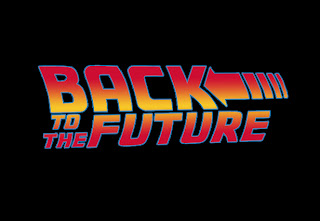Mr. Dancealot by: Meagan Freeman, Linda Check, and Tim Johnson
In the video Mr. Dancealot, we witnessed how a dance class should NOT be taught. Professor Dancealot is a satire of classroom where strictly teaching the subject does not mean actually teaching the subject. To start with, the professor read directly off the power point that told about each dance step by step, but never once looked at the students. He then proceeded to show the students moves and hand placements. When a student stood up to see what his professor was demonstrating, the professor yelled for him to sit down. The entire semester spiraled downward as Mr. Dancealot continued to confused the students by: playing both the male and female role, never providing the opportunity for the students to get out of their seats and actually practice the dance, and not allowing the students to actually see his “dance moves” because he was constantly behind the desk.
To top off this ridiculous class, the final took place in a ballroom where the students had to pair up and dance. When two of the students paired up, they talked about how they tried to practice at home, but lacked the proper room. When the male asked what dance they were performing, both members stopped to check their notes instead of continuing to dance. This satire explains why reading about certain topics is not enough to actually learn the topic. It is nearly impossible to learn dance moves by just listening, and not practicing. This video shows that nothing can be learned by just listening and watching, you have to “make a move” and practice what is being taught. The “Dali” group agrees that this professor should change his name to DanceaNOT!
The Networked Student by Meagan Freeman
After watching “The Networked Student” by Wendy Drexler, I heard about connectivism for the first time. Connectivism seems like it could be very overwhelming, but beneficial. It is great to connect with other people to learn. I believe a main component of learning is to have as many connections as possible. This is exactly what Connectivism learning does.
By using connectivism, you have the access to connect with people and professors around the world! Many students, including me, did not even know that was possible. Through connectivism, teaching and learning have no limits! Students should know how to connect with others through various sources, instead of looking at a powerpoint and reading your textbook. It gives people the opportunity to teach new things, and get the word out there. Connectivism opens many doors to learning, and gives so much opportunity!
I can see how connectivism needs a teacher, but I also see how the teacher is not primarily useful. Without a teacher, the knowledge connecting all over the world would not ever be available. The teacher is there to guide you. He or she is the one explaining what connectivism is, how it works, and what opportunities are available. Conversely, It seems as if any teacher could teach any subject, without much knowledge of it when using connectivism. The teacher does have to know how to connect students to resources, but not how to actually teach the course.
Teaching in the 21st Century By Tim Johnson
Kevin Roberts video “Teaching in the 21st Century” is trying to break away from the traditional, “pens and papers” way of teaching into a modern technology friendly format. In the video, he ask how a teacher can teach a student anything if that student could easily find the information that the student wanted simply by looking it up. He wants to move the focus onto teaching students how to use technology to get the information they need instead of a teacher teaching one thing, another teacher teaching something else, and the third teacher teaching the last thing. Roberts suggest we teach children to use the World Wide Web to its full potential by seeking out social media, collaborated websites, and search engines to build our knowledge on things.
Foremost, I agree with Roberts video for the most part. I especially believe in the engagement versus entertainment. I think we should engage students more, but is technology the true wave of the futures; yes in the long run or even sooner than I suspect, but as of now, no. Technology is progressing too quickly in my opinion which I don’t blame them, but how are we suppose to teach students when back when we were kids, we weren’t even allow flip phones till we were teenagers, or at least that was my case. I think we should learn how to teach students to gather information, sift through websites for correct and positive information, but I still feel we need lecture base, pens and paper type classrooms. I’ll be the first to admit, I don’t take notes, but I know the process of doing so and how it beneficial. What I don’t like is taking a web course, having no idea what I doing, trying to contact my professor, and waiting for a reply. I understand a teacher has a hundred students to teach, why should I get a respond the second I ask a question? I don’t, but I would like the availability to meet him face to face which could be impossible if he’s ten states way. The video asked, “Where are they learning Responsibility, Reliability, Integrity? Where are they learning this? Friends, strangers, or themselves?” The internet is a wandering invention bringing us so much closer, but yet farther apart. My mother told me, “We were doom as the human race when everyone is talking to each other with their laptops all in the same room,” which we did. I think we should learn what Roberts has to say and start implying it, but let’s not drop the ball on pen and paper just quite yet.
Harness Your Students' Digital Smarts By Linda Check
This week I watched the movie Harness Your Students’ Digital Smarts on Edutopia, and I not only learned a lot about new advancements in digital technology, but also learned about the amazing woman who made it all possible. Vicki Davis is a blogger, IT director, but first, and foremost, a teacher in rural South Georgia. Davis said, “If you only have paper and pencile, then only certain types of children will succeed.” This statement is what made me like Mrs. Davis and her ideas, but if was the fact that she lets her students teach the class and the fact that she makes the students work for the information that made me LOVE her ideas. Her genius, however, does not stop in the walls of the classroom.
Davis, along with the help of Julie Lindsay, founded the global collaborative project- “Digi Teen,” where students all around the world study digital citizenship by reading, writing, and posting work on two digital portals. The first portal is Teen-Wiki, which the students post work on assigned topics. The second portal is Digi Teen Social Network, where students and teachers from around the world can connect, blog, and share ideas.
Davis and Lindsay also founded “Flat Classroom Project.” This allows students to study trends in information technology by collaboratively writing reports with other people and creating videos where they have to outsource part of it to other students. This way the students are able to experience the trends and learn about the trends with students all over the world. Overall, the part that amazes me the most is how hands on the students are, and they not only learn the material, but also teach other students the ins and outs of computing technology.
I also explored Edutopia further, and found some great materials that I could use in my future classroom. One thing I found was the large number of free classroom guides and educational downloads, that ranged from “A Parent's Guide to 21st-Century Learning” to “How to Thank a Teacher” to even “Top Ten Tips for Assessing Project-Based Learning.” Some other materials I found, that I could use in my adventure to becoming a special education teacher, were the massive number of blogs that Edutopia has in its library. I looked through several blog posts giving advice to special education teachers on what works and what does not work in the classroom. Overall, Edutopia is a wonderful resource that all teachers and parents should know about!
 After looking at my blog post number 1, I can truly say I am still happy with what I wrote. I would definitely add some things to each category. Under "what do you want your students to be able to do?", I never said anything too specific. Now, I can confidently add that I want them to be able to use an iPad effectively and blog independently. Those are things that students will have to work towards, but I want my students able to do it. My second section can be left as is. The third section, "what tools will you use in your classroom?" needs a few changes. I want everything in that section, but more! The tools I will be adding are blogs, podcasts, and book trailers. I loved all of those activities. Each one involves the student and there are a ton of educational benefits.
After looking at my blog post number 1, I can truly say I am still happy with what I wrote. I would definitely add some things to each category. Under "what do you want your students to be able to do?", I never said anything too specific. Now, I can confidently add that I want them to be able to use an iPad effectively and blog independently. Those are things that students will have to work towards, but I want my students able to do it. My second section can be left as is. The third section, "what tools will you use in your classroom?" needs a few changes. I want everything in that section, but more! The tools I will be adding are blogs, podcasts, and book trailers. I loved all of those activities. Each one involves the student and there are a ton of educational benefits. 


























